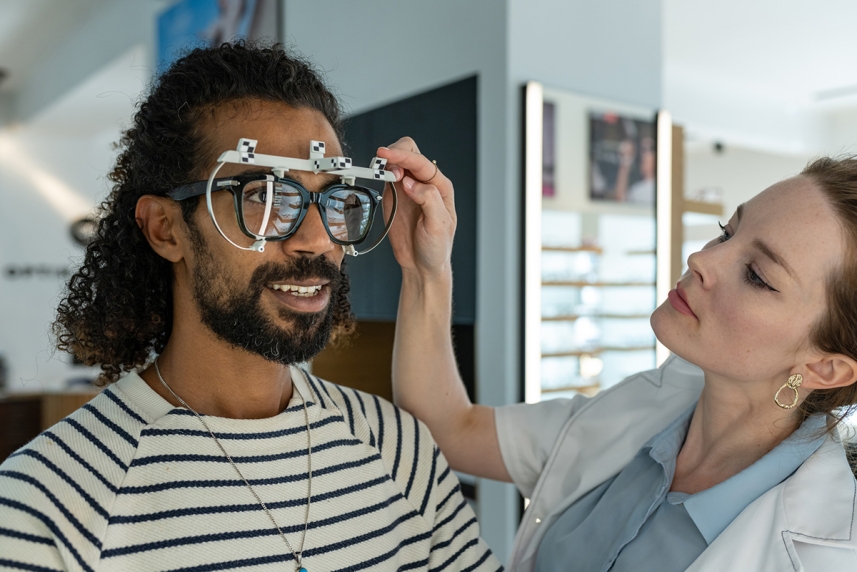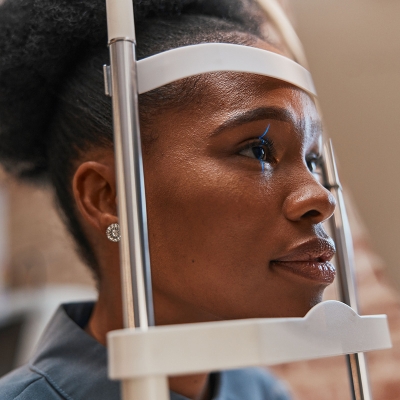3 steps a person can take to tap into their UnitedHealthcare Vision benefits
Wear glasses, contact lenses or both? Here’s how people’s vision plans may work.

Just as a person might schedule an annual physical with their doctor, it may be equally important for them to get their vision checked every year. That’s true even if a person may think they’re seeing perfectly well — or are able to “make do” with the vision they have.
As people age, normal changes to their vision may start taking place. People may notice that they have more trouble seeing up close when reading prescription bottles — or far away when driving.
A vision exam could help improve those problems and help preserve a person’s sight. That’s where UnitedHealthcare Vision’s benefit for eyeglasses and contact lenses comes in.
People who wear both glasses and contact lenses, however, may wonder how their UnitedHealthcare Vision benefits may be used.
Here’s what to know about the benefits, and how they may keep a person’s eyes healthy as they age. Follow these 3 steps.
Providers in the UnitedHealthcare Vision Network are here to help keep your vision healthy. Search for an in-network provider now.
Step #1: Schedule an eye exam.
With a UnitedHealthcare Vision plan, an annual routine eye exam may come with little to no copayment. During a routine eye exam, an eye care provider will perform vision tests that look for refractive errors (that’s a type of vision problem that makes it hard to see clearly). These could include:
- Nearsightedness (things appear blurry at a distance)
- Farsightedness (things appear blurry up close)
- Astigmatism (things may appear both blurry and distorted at distance and up close)
That may tell the eye care provider if glasses or contact lenses are needed.
If a person already wears prescription glasses and/or contact lenses, they may still want to get an annual vision test. It’s common for an eye prescription to change over the years, and it may need to be updated. In short, everyone may benefit from a routine eye exam.
Step #2: Pick out a preferred type of glasses or contact lenses.
If a person’s eye care provider tells them that they would benefit from glasses or contact lenses — or need an updated prescription — UnitedHealthcare Vision may have a benefits package that provides an allowance for new glasses or contacts.
Depending on the plan, a person may receive an allowance to use towards the purchase of contacts or frames with standard lenses. Standard lenses include:
- Single
- Bifocal
- Trifocal
- Standard progressive lenses
These lenses may also come with scratch-resistant coating, which improves their durability, and a person’s vision coverage may also offer savings on lens upgrades.
A person’s choices of frames may vary greatly compared to their lens choices. They might have access to a variety of popular designer styles, including but not limited to:
- Michael Kors
- Oakley
- Prada
- Ray-Ban
To know what brands may be available, check online at uhcglasses.com.
For contact lenses, a person may have access to all major brands, including Acuvue, Dailies and Air Optix, among others. A perk may be the ability to order contacts online, which streamlines the process. If a person chooses to do so, they’ll save 10% on each order and receive free shipping on orders of $99 or more. Visit uhcglasses.com to get started.
The glasses and/or contact lens benefit may be covered every year or every 2 years. That means that even if a person doesn’t need new frames, they could still use their allowance to purchase a pair of backup frames, for instance. It’s one way to make vision benefits go beyond what a person might need for their vision, health and lifestyle.
Step #3: Don’t forget to double-check the plan’s benefits.
It’s important to note that most UnitedHealthcare Vision plans offer these benefits for glasses or contact lenses, not both.
Before setting up an eye appointment, it’s always a good idea to double-check vision benefits. One way to do that: sign in or register online through myuhcvision.com. Under Benefits & Coverage, select Benefit Summary to get a full view of what benefits are available.
Who knows? Taking this small step today might save a person some vision issues — and even some money — in the future.
Comfort is key when it comes to contacts. Find your new favorites contacts now — and save 10%.


